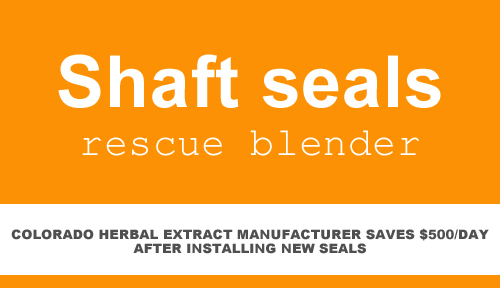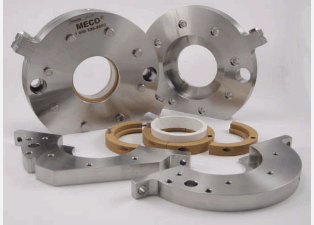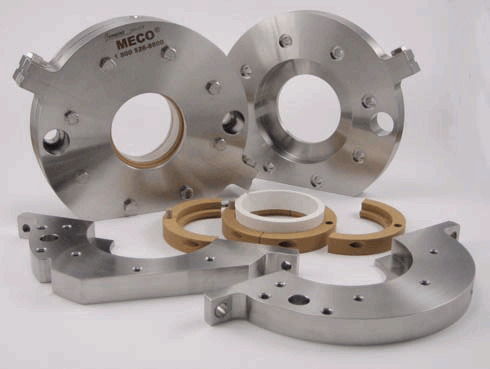Maltodextrin is a fine, abrasive powder, similar in consistency to granulated sugar, that is put through a 90 percent, 80 mesh screen. The blending of the product is done in a double ribbon blender. When the machine was purchased second-hand, it had a bent and badly scored shaft, causing the packing gland that was on the machine to give them "constant problems." The packing gland did not seat properly on the bent shaft, which created a leak path. The abrasive consistency of the product "chewed up the packing" and the shaft as it escaped. Maintenance measures included tightening the seal weekly and replacing the packing every 1-2 months. Each packing change took 1 to 1-1/2 hours and tightening the gland follower took 1/2 hour each time, so they were spending 5 hours per month on seal maintenance alone. With this old packing gland, they ran three blends per day, five days per week. Product loss through leakage amounted to 10 pounds in these three blends for a total dollar value of $500-600 per day. The cleanup time between batches took 1-1/2 hours due to spillage.
The plant has an air changeover room with large exhaust fans. When they were using the packing gland seals, there was so much dust in the air that the dust would be sucked into the exhaust system and it built up in air ducts. Workers recalled drilling holes in the ducts to release the dust. Operators had to wear the correct "PPE" (Personal Protective Equipment), often a full-face respirator, to protect their eyes and lungs from the dust, It was becoming very plain that they would need to replace their blender if they could not improve the seal problems associated with it. They found MECO custom seals through a web search and decided to give them a try. MECO built two 4-inch seals for the blender. The seals were designed to be purged with nitrogen to keep positive pressure against the seal faces. This purge medium required monitoring tank levels and changing tanks when they were empty. This was not realistic for their crew and after the first tank or so, the purge gas was removed from the seal. At some point, it was realized that the shaft diameter was actually 3.926 inches and not 4 inches. During the ten months or so that the 4-inch MECO seals were running on the blender without being purged, they leaked a TOTAL of 30 pounds of product. When the sizing problem was discovered, MECO sent them redesigned internal parts to correct the seal’s fit to the shaft. At the same time, the plant engineer set up an air purge to the seals to replace the unused nitrogen. The company is happy to report that for the past five years, their MECO seals have operated on this blender "maintenance-free." Cleaning time between batches has been reduced by 33 percent by eliminating the need for product cleanup outside the blender. This reduced the turnaround time between batches by the same amount, resulting in increased throughput. Batch cross-contamination issues were also mitigated. Operators can safely work around the machine without respiratory protection now and the air ducts are clear. The spectre of having to purchase a new blender at an estimated cost of $25-30,000 has been exorcised. The seals paid for themselves in about one month of operation through elimination of product loss alone.
March 2008•Powder Handling Solutions | Processing
Reprinted with permission from Processing magazine 2008



